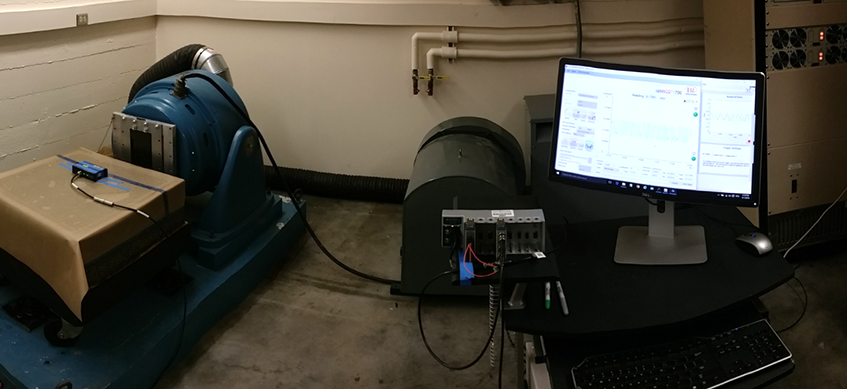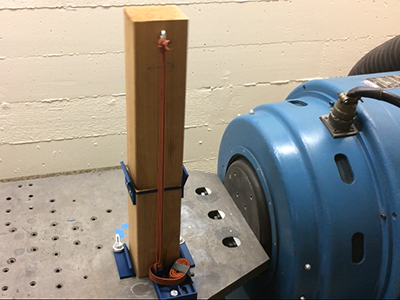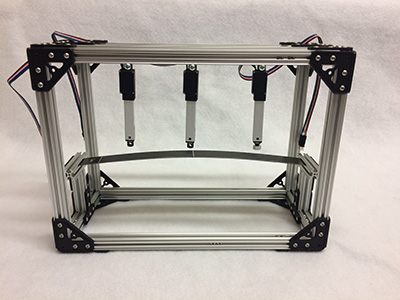The Structural Vibrations Laboratory is outfitted with experimental testing equipment to study the vibrations and stability of lightweight structures common in aerospace, mechanical and naval applications. The equipment is well-suited for qualitative studies of scaled civil engineering structures, or structural components. In these research areas, nonlinear response and the many unpredictable phenomena (for example chaos, coexisting solutions and fractal bifurcation thresholds) is a common challenge.

Composite plate vibrations testing.
The analysis of structural vibrations is valuable in both fundamental research of solid mechanics and in applications in aero, civil and marine engineering. Current experimental projects in the lab include an investigation of the nonlinear dynamics and damage progression of buckled composite hypersonic aircraft panels (which also includes the UW CT scanner facility); fundamental research on post-tensioned rocking structures; and feedback stabilization and control of buckled structures.

Small-scale fundamental research on rocking structures under base excitation (Left).
Feedback-controlled load frame for investigation of unstable equilibria of buckled structures (Right).
The laboratory research utilizes a combination of loading (electrodynamic shaker, small-scale electric actuators) and sensing (laser displacement sensors, load cells) hardware. The research performed in the lab is usually performed in concert with computational and/or analytical work in order to develop a comprehensive understanding of the physics or applications under study.
